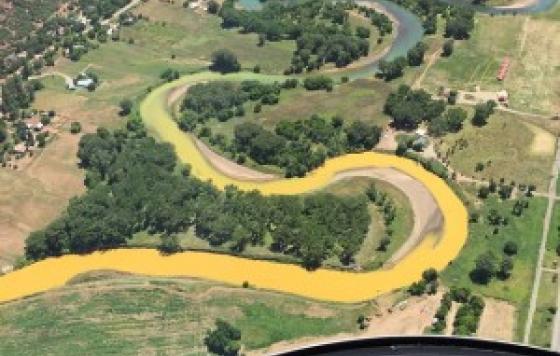
The referenced media source is missing and needs to be re-embedded.
By Jennifer Peters, National Water Campaigns Coordinator
Last month dozens of reporters gathered on the shores of Mountain Island Lake in North Carolina. They were there to hear national and regional environmental leaders discuss the worst toxic water pollution problem – the wastewater discharges from coal-fired power plants, which contain a witches’ brew of dangerous elements, such as lead, mercury, selenium and arsenic. Mountain Island Lake is the drinking water reservoir for nearly 800,000 residents in and near Charlotte. The reservoir was also used as a water pollution dumping ground for Duke Energy’s Riverbend Power Station. For decades, Duke poured its toxic coal ash waste into unlined storage ponds and then discharged the wastewater directly into Mountain Island Lake.
Though the plant went off line in April, its pollution remains. Large volumes of coal ash water can still flow or seep from the unlined storage ponds, which cover 71 acres and tower 80 feet above Charlotte’s drinking water reservoir. In fact, the state of North Carolina has brought a lawsuit against Duke Energy for contaminating Mountain Island Lake with high levels of arsenic, iron, manganese and cobalt.
Hopping in boats, we gave reporters an up-close look at the leaking coal ash ponds. Along the way, we jetted past the drinking water intake for the city of Charlotte and surrounding communities. As if the arsenic and cobalt weren’t enough, coal ash discharges also contain bromide. When Bromide is combined with the disinfectants used to treat drinking water such as chlorine, they form carcinogenic disinfectant byproducts like trihalomethanes (THMs). Even though the plant is discharging immediately above the drinking water intake, operators are not required to control for bromide or other contaminants of concern, including arsenic, cobalt and manganese.
In addition to leaking contaminants, the coal ash ponds towering over Mountain Island Lake have been found by the EPA to be structurally unstable and are listed as “high hazard coal ash impoundments.” The only thing between the lake and thousands of pounds of toxic coal ash is an earthen dam, similar to the TVA dam that broke in Tennessee in 2008 destroying nearby homes and contaminating surrounding streams with a billion gallons of coal ash slurry.
Power plants like Riverbend have received a free pass to pollute for decades because the rules for power plant wastewater have not been updated since 1982. In June EPA proposed new regulations that will, for the first time, require power plants to control the amount of toxic metals and other chemicals that they discharge into lakes, rivers, streams and bays. The agency is accepting public comments on its proposed regulation through September 20 Clean Water Action is fighting to ensure that the agency finalize a rule that will require power plants to control all of their toxic wastewater, not just some it. You can read more about our campaign HERE and also take ACTION HERE.Related Posts
Stay Informed
Get the latest updates and actions:
Thanks for signing up!
There was a problem processing your signup. Please try again.


